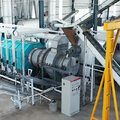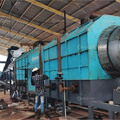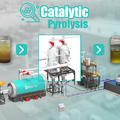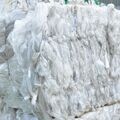In the ever-evolving landscape of sustainable agriculture, one often overlooked yet potent ally is sawdust charcoal. Derived from a waste product of the wood industry, sawdust, this form of biochar holds transformative potential for farming practices worldwide. In this exploration, we delve into the agricultural advantages of sawdust charcoal, uncovering how this carbon-rich material contributes to soil health, crop productivity, and sustainable farming practices.

The Birth of Sawdust Charcoal
Sawdust charcoal is a byproduct of pyrolysis, a process that involves heating organic materials, such as wood, in the absence of oxygen. This thermal decomposition results in the creation of biochar, a stable form of carbon that can be used to enhance soil fertility. Sawdust, abundant in the woodworking industry, becomes a valuable resource when transformed into charcoal, providing an eco-friendly solution for both waste management and agricultural improvement. Try the sawdust charcoal making machine.
Carbon-Rich Soil Enrichment
Retaining Nutrients: One of the primary agricultural advantages of sawdust charcoal lies in its ability to retain and slowly release nutrients to plants. The porous structure of biochar acts as a reservoir, holding essential nutrients like nitrogen, phosphorus, and potassium. This slow-release mechanism helps prevent nutrient leaching, ensuring that crops have consistent access to the elements vital for growth.
Microbial Habitat: The porous nature of sawdust charcoal creates a hospitable environment for beneficial soil microorganisms. These microbes play a crucial role in breaking down organic matter, fixing nitrogen, and promoting nutrient availability. By providing a habitat for these microorganisms, sawdust charcoal contributes to a thriving soil ecosystem that supports plant health.
Soil Structure Enhancement
Improved Water Retention: The physical properties of sawdust charcoal contribute to improved water retention in the soil. The porous structure allows biochar to act like a sponge, holding onto moisture and reducing water runoff. This is particularly advantageous in regions facing water scarcity, as it enhances the efficiency of irrigation and helps crops withstand drought conditions.
Preventing Soil Compaction: The incorporation of sawdust charcoal into the soil can help mitigate soil compaction issues. The presence of biochar enhances soil structure, reducing the likelihood of compaction caused by heavy machinery or intense rainfall. Improved soil structure allows for better root penetration and aeration, fostering healthier plant development.
Mitigating Environmental Impact
Carbon Sequestration: The conversion of sawdust into charcoal contributes to carbon sequestration, a process that involves capturing and storing carbon dioxide from the atmosphere. By locking carbon in a stable form (biochar) and incorporating it into the soil, sawdust charcoal helps mitigate the impacts of climate change by reducing atmospheric carbon levels.
Waste Reduction: Utilizing sawdust for charcoal production addresses the issue of waste in the woodworking industry. Rather than discarding sawdust as a byproduct, converting it into charcoal creates a valuable resource for agriculture. This approach aligns with principles of sustainability by minimizing waste and maximizing resource efficiency.
Crop Productivity and Yield
Increased Nutrient Availability: The nutrient-rich environment created by sawdust charcoal positively influences nutrient availability for plants. As biochar enhances the soil's cation exchange capacity (CEC), it facilitates the retention and exchange of essential nutrients, leading to improved nutrient uptake by plants. This, in turn, contributes to increased crop productivity.
Biochar-Microbe-Plant Interaction: Sawdust charcoal fosters a symbiotic relationship between soil microbes, biochar, and plants. Beneficial microorganisms thrive in the biochar-rich environment, forming partnerships with plant roots. This mycorrhizal association enhances nutrient absorption, disease resistance, and overall plant health, ultimately translating into higher yields.
Practical Implementation and Best Practices
Application Rates: While sawdust charcoal offers numerous benefits, proper application rates are crucial to avoid unintended consequences. Farmers should carefully calibrate the amount of biochar added to their fields based on factors such as soil type, crop type, and existing nutrient levels.
Incorporation Techniques: Effective incorporation of sawdust charcoal into the soil is essential for maximizing its benefits. Mixing biochar thoroughly with soil during tillage or incorporating it into compost are common practices. This ensures even distribution and integration with the existing soil matrix.
Preconditioning: Preconditioning sawdust charcoal through a process known as "charging" before application can enhance its performance. This involves pre-treating biochar with organic materials, compost, or nutrient solutions to infuse it with additional nutrients and microbial life, making it more responsive in the soil.

Challenges and Considerations
Variability in Feedstock: The quality and properties of sawdust charcoal can vary depending on the feedstock and the pyrolysis process. Contaminants or incomplete carbonization may affect the overall performance of biochar. Quality control measures are essential to ensure consistency and effectiveness.
Long-Term Effects: While the short-term benefits of sawdust charcoal are well-documented, the long-term effects on soil health and plant productivity are areas of ongoing research. Continuous monitoring and research are necessary to understand the sustained impact of biochar over extended periods.
Case Studies and Success Stories
Amazonian Terra Preta: The ancient Amazonian practice of creating Terra Preta, or dark earth, involves adding charcoal to the soil. This historic agricultural technique has sustained fertile soils for centuries, showcasing the enduring benefits of incorporating charcoal into agricultural practices.
Rice Paddy Applications: Research in rice paddy fields has demonstrated the positive impact of sawdust charcoal on methane emissions, water use efficiency, and rice yields. These findings highlight the diverse applications of biochar in different agricultural settings.
Future Prospects and Innovations
Customized Biochar Products: Ongoing research explores the development of customized biochar products tailored to specific crops, soils, and climate conditions. This approach aims to optimize the benefits of sawdust charcoal for diverse agricultural scenarios.
Technological Integration: Advances in technology, including precision agriculture and sensor technologies, offer opportunities to optimize the application of sawdust charcoal. Precision application methods can ensure targeted and efficient delivery of biochar to areas where it is most needed.
Conclusion: Nurturing Agriculture with Sawdust Charcoal
The agricultural advantages of sawdust charcoal are multi-faceted, offering a holistic approach to sustainable farming. From enhancing soil fertility and structure to promoting water efficiency and mitigating environmental impact, sawdust charcoal stands as a versatile ally in the quest for agricultural sustainability.
As farmers, researchers, and policymakers increasingly recognize the potential of sawdust charcoal, its adoption is poised to grow. However, ongoing research, education, and collaboration are essential to fully unlock the benefits of this carbon-rich resource and integrate it seamlessly into diverse agricultural landscapes.
In the union of sawdust and soil, we find a harmonious synergy—one that nurtures crops, sustains soil health, and charts a course toward a more resilient and sustainable agricultural future. Sawdust charcoal emerges not just as a byproduct but as a transformative force, embodying the promise of a greener, more productive, and ecologically balanced agricultural landscape.





